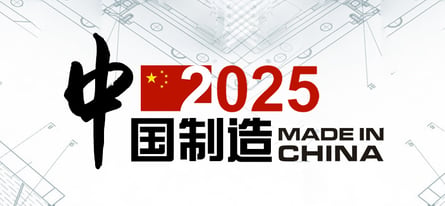China Investment Policy
January 25, 2024 •Andrew Manton
China’s economy has grown an average of over 10% in the fifteen years ending in 2022.[1] This rapid growth and seemingly welcoming marketplace has tempted global investors for over two decades. However, what most investors fail to recognize or, worse, intentionally ignore, is that the government, run by the Chinese Communist Party (CCP), has carefully designed a mercantilist trade policy that seeks to exploit the free-market system while also conducting systematic intellectual property theft from companies and governments around the world causing incalculable damage.
Replacing the Hegemony
For thousands of years, wars and constant battling have been ingrained into Chinese culture. From its formation in 1949, the CCP has drawn on writings from early dynasties in the Spring and Autumn and the Warring States Periods and incorporated some of those lessons into its current structure. This mentality, along with heavy influence from Leninism, Marxism, and Darwin, still drive current CCP policies. What is known today is that Mao Zedong drafted a long-term, all-encompassing plan to replace the current hegemon (United States) using nine principles:[2]
1. |
Induce complacency to avoid alerting your opponent. |
2. |
Manipulating opponent's advisors. |
3. |
Be patient - for decades or longer - to achieve victory. |
4. |
Military might is not the critical factor for winning long-term competition |
5. |
Recognize that the hegemon will take extreme, even reckless action to retain its dominant position. |
6. |
Never lose sight of deception tactics. |
7. |
Establish and employ metrics for measuring your status relative to other potential challengers. |
8. |
Always be vigilant to avoid being encircled or deceived by others |
9. |
Steal your opponents' ideas and technology for strategic purposes. |
Made in China
These principles are laid out in what is referred to as “The Hundred-Year Marathon” plan that each CCP president is tasked to help complete by 2049. Xi Jinping, the current president who sees himself as more of an emperor, has perhaps been the most overt about his role in furthering the goals of the Hundred Year Marathon.  For the government’s quinquennial planning session that occurred in 2016, Xi oversaw the drafting of the CCP’s “Made in China: 2025” plan which laid out details of a 10-year plan to become the leader in ten different industries using the “assimilation and absorption of imported technology.” In other words, it gave the direct command to steal intellectual property from companies and governments around the world to achieve the CCP’s plan.
For the government’s quinquennial planning session that occurred in 2016, Xi oversaw the drafting of the CCP’s “Made in China: 2025” plan which laid out details of a 10-year plan to become the leader in ten different industries using the “assimilation and absorption of imported technology.” In other words, it gave the direct command to steal intellectual property from companies and governments around the world to achieve the CCP’s plan.
From automobiles to semiconductors, the CCP has directed government officials and the army (PLA) to hack, bribe, and demand employees at non-Chinese competitors to hand over intellectual property. In the US alone, the Commission on Theft of American Intellectual Property, said in 2019 that Chinese-led IP theft cost companies over $600bln per year. Outside of the US, we have already seen companies shut down or forced to merge with a competitor because of IP theft.
Control, Surveillance, & Conformity
Besides the systematic theft of IP, the CCP is engaged in many other programs that violate human rights inside of China. These include: a comprehensive state-run propaganda system, total control of the internet in China which include comprehensive censorship, vague laws designed to ease the detention of anyone questioning or going against the CCP narrative (National Security Law and anti-espionage laws), lack of fair trials, total surveillance system which also encourages citizens to report others, social credit system designed to publicly shame, the banning of books and certain subjects from the internet, mandatory “patriotic” education where revisionist history and “Xi Jinping Thoughts” are taught, and of course, the Uyghur genocide designed to eradicate Islam from China and force conformity of all people to the Chinese ideal as stated by the CCP.
Furthermore, the CCP seeks to accomplish their goals with little resistance by controlling the narrative around China both internally and externally. To achieve the goals of the Hundred Year Marathon the CCP conducts the following operations: territory expansion that includes their Nine-dash line beliefs, Belt & Road Initiative, South China Sea military islands, the total overtaking of Hong Kong, and their intentions to overtake Taiwan.  Other programs include Thousand Grains of Sand, Thousand Talents Program, Confucius Institutes, bribery (UN, government officials, corporate CEO’s, leaders of other countries), vast misinformation campaign (TikTok, Confucius Institutes, corrupting professors, various other media).
Other programs include Thousand Grains of Sand, Thousand Talents Program, Confucius Institutes, bribery (UN, government officials, corporate CEO’s, leaders of other countries), vast misinformation campaign (TikTok, Confucius Institutes, corrupting professors, various other media).
How to Approach China as a Values-Aligned Investor
We believe investors can no longer support China’s systematic theft of intellectual property and dangerous ideology. Therefore, OneAscent adheres to a strict policy when considering investment in Chinese companies. The following are our investment guidelines in China:
1. |
No investment in companies in any of the 10 industries spelled out in the “Made in China: 2025” plan. |
As discussed above, Chinese companies in these industries benefit from stolen intellectual property to the detriment of competitors in free markets around the world. Additionally, these companies receive unfair and unlawful government subsidies that further enable their ability to exist and damage companies outside of China.
The ten industries include:
 |
 |
 |
 |
 |
|
Artificial intelligence and quantum computing |
Automated machine tools and robotics |
Aerospace and aeronautical equipment |
Maritime equipment and high-tech shipping |
Modern rail transport equipment |
 |
 |
 |
 |
 |
|
Self-driving and new-energy vehicle |
Power equipment |
Agricultural equipment |
New Materials |
Biopharma and advanced medical products |
2. |
No investment in companies that have any direct or proxy state ownership. |
Every company in China is lawfully obligated to hand over any and all information and/or help the government in anyway they deem necessary. However, State Owned Enterprises, companies with government officials on the board of directors, or have large shareholders that are government entities (proxies) are easy to eliminate because of their more direct conflict of interest.
3. |
No investment in companies with ties to or direct relationships to stakeholders thought to be committing human rights violations. |
Human rights violations can be anything discussed in the above section and include the production of technology for surveillance, companies that abuse employees in any way or have suppliers that do so, or companies that help the government with censorship or propaganda dissemination.
4. |
No investment in companies that can/have otherwise committed or benefited from state-sponsored intellectual property theft. |
This includes any other company in an industry not stated in the “Made in China: 2025” plan but is known or suspected to have benefited from stolen IP.
5. |
No investment in companies that have received unfair/illegal subsidies from Chinese government. |
This includes any other company in an industry not stated in the “Made in China: 2025” plan but is known or suspected to have benefited from subsidies that create unfair competitive advantages to the detriment of non-Chinese companies.
[1] Source: Bloomberg
[2] Source: As summarized by Michael Pillsbury in his book, “The Hundred-Year Marathon: China’s Secret Strategy to Replace America as the Global Superpower.” St. Martin’s Griffin, March 2016.
This material is intended to be educational in nature, and not as a recommendation of any particular strategy, approach, product or concept for any particular advisor or client. These materials are not intended as any form of substitute for individualized investment advice. The discussion is general in nature, and therefore not intended to recommend or endorse any asset class, security, or technical aspect of any security for the purpose of allowing a reader to use the approach on their own. Before participating in any investment program or making any investment, clients as well as all other readers are encouraged to consult with their own professional advisers, including investment advisers and tax advisors. OneAscent can assist in determining a suitable investment approach for a given individual, which may or may not closely resemble the strategies outlined herein.

